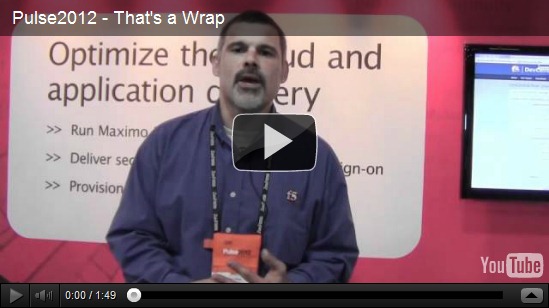While I’m not the biggest fan of taking surveys, I sure love the data/reports that are generated by such creatures. And boy has there been a bunch of recent statistical information released on cloud computing, information security, breaches and general IT. Since this prologue is kinda lame, let’s just get into the sometimes frightening, sometimes encouraging and always interesting results from a variety of sources.
2012 Verizon Data Breach Report: If you haven’t, read Securosis' blog about how to read and digest the report. It’s a great primer on what to expect. An important piece mentioned is that it’s a Breach report, not a cybercrime or attack report. It only includes incidents where data was taken – no data loss, not included. And with that in mind, according to the report, there were 855 incidents with 174 million compromised records, the 2nd highest data loss total since they’ve been tracking (2004). This coming after a record low 4 million lost records last year. The gold record of stolen records. While hacktivism exploded, accounted for 100 million of that 174 mill of stolen records and 58% of all data theft along with untraditional motives; credit cards, intellectual property, classified info and trade secrets were all still hot targets. 81% of the breaches used some sort of hacking with 69% involving malware. 79% were targets of opportunity meaning they had an exploitable vulnerability rather than being ‘on a list.’ 96% of the breaches were not that difficult and 97% could have been avoided using simple to standard protection mechanisms. Unfortunately, organizations typically don’t discover the breach until weeks later. As Securosis points out, don’t be flustered by the massive increase in lost data but focus on the attack and defense trends to help protect against becoming a statistic and as Verizon mentions, ‘this study reminds us that our profession has the necessary tools to get the job done. The challenge for the good guys lies in selecting the right tools for the job at hand and then not letting them get dull and rusty over time. Evidence shows when that happens, the bad guys are quick to take advantage of it.’
BMC Software Survey: Conducted by Forrester Consulting on behalf of BMC, ‘Delivering on High Cloud Expectations’ found that while 81% of the respondents said that a comprehensive cloud strategy is a high priority, they are facing huge challenges in accomplishing that task – mainly complexity. Even with cost reduction as a top IT priority, 43% reported using three or more hypervisor technologies as they try to reduce complexity. CIOs are concerned that cloud technologies offer an avenue for groups to circumvent IT which may hinder IT’s ability to meet overall business expectations. When groups deploy unmanaged public cloud services without IT involvement it can add to the complexity that they are trying to avoid. While 79% of respondents do plan on supporting mission-critical workloads on unmanaged public cloud services over the next two years, only 36% allow this today. No surprise that hybrid-cloud deployments, at 37%, was the most desired deployment. The full study results will be announced on Thursday, April 26, 2012 at 11 a.m. CDT as part of a BMC webinar.
CSC Cloud Usage Index: Late last year, Independent research firm TNS surveyed more than 3,500 cloud computing users in eight countries around the world to find answers to cloud usage, expectations, attitudes and other cloud related questions. The survey focused on capturing user information about outcomes and experiences rather than predictions and intentions. In an interesting shift from the typical ‘cost savings’ and ‘business agility’ usually cited as a top motivator, one-third of respondents cite their need to better connect employees who use a multitude of computing devices as the number one reason they adopt cloud. 17% claim agility and only 10% indicate cost savings as a top reason for cloud adoption. 82% of respondents said they saved money on their most recent cloud project but 35% of U.S organizations reported a payback of less that $20,000. In terms of overall IT performance, 93% of respondents say cloud improved their data center efficiency/utilization and 80% see similar improvements within six months of moving to the cloud.
Zenoss 100 Best Cloud Stats of 2011: Admittedly, this came out last year but it is still a great statistical overview of Cloud Computing. It starts with data growth stats, like 48 hours of video uploaded to youtube every minute; that 74% of Data Centers have increased their server count over the last three years accounting for 5.75 million new servers every year yet 15% do not have data backup and recovery plans; that, on average, cloud users report saving 21% annually on those applications moved to the cloud; that a delay of 1 second in page load times equals 7% loss of conversions, 11% fewer pages viewed and a 16% decrease in customer satisfaction; that Agility is the top driver for cloud adoption and Scalability the top factor influencing cloud use; that 74% of companies are using some sort of cloud service today yet 79% do not have an IT roadmap for cloud computing and a whole slew of others. All the stats appear to be attributed and run the gamut from storage to cloud to apps.
Cloud Industry Forum (CIF) study: As enterprises continue to embrace cloud adoption, it is important for service providers to understand motivators for cloud adoption to ensure those services are being offered. This study, USA Cloud Adoption & Trends 2012 shows that smaller U.S. companies indicate that flexibility as their main driver for cloud adoption while large enterprises cite cost savings as their main reason for cloud deployments. This survey also noted that ‘Cloud’ is no longer a nebulous buzzword with 76% of polled organizations already using some sort of cloud computing for at least one service. Organizations are happy about it also – 98% said they were satisfied with the results of their cloud services with 94% expecting to increase their use in the next 12 months. Data security and data privacy were tagged as the top concerns with 56% and 53% respectively.
By no means an exhaustive list of all the recent survey results pertaining to cloud and/or IT security, but they do offer some interesting data points to consider as organizations continue to strive to deliver their available applications as fast and secure as possible.
ps
Related:
- How to Read and Act on the 2012 Verizon Data Breach Investigations Report (DBIR)
- 100 Best Cloud & Data Stats of 2011…so far
- CWE (Common Weakness Evaluation)/SANS Top 25 Most Dangerous Software Errors
- BMC Software Survey Signals Comprehensive Cloud Strategy is Needed to Alleviate Growing Tensions between Business and IT Teams
- U.S. cloud adoption fueled by cost savings and flexibility
- Yup, your cloud hunch was right
- CSC Cloud Usage Index
- F5 Cloud Computing solutions
Technorati Tags: F5, survey, personal cloud, cloud computing, Pete Silva, security, business, data breach, technology,application delivery, cloud, mobile, infrastructure 2.0, web, internet
| Connect with Peter: | Connect with F5: |
| |






